Corn is rich in calcium and sodium, and contains ascorbic and pantothenic acids. It is a source of fiber, nutrients, and vitamin E. The crop is grown in open, sunny fields. To ensure a bountiful harvest, it must be protected from diseases and pests during cultivation. However, unwanted visitors occasionally appear on the plants and destroy the yield.
Let’s examine the most dangerous diseases and pests affecting corn and the measures to combat them.
Table of contents
Most Dangerous Corn Diseases
These issues arise due to poor care, contaminated soil, or failure to follow crop rotation rules. Early detection and timely intervention are crucial.
Common Smut
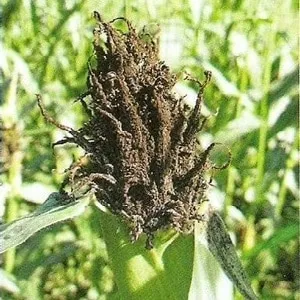 This fungal disease affects cobs, inflorescences, and tassels. The tassels turn into a dusty gray mass, while the cobs become black lumps. Fungal spores reside inside the plant until maturity, causing deformities and stunted growth.
This fungal disease affects cobs, inflorescences, and tassels. The tassels turn into a dusty gray mass, while the cobs become black lumps. Fungal spores reside inside the plant until maturity, causing deformities and stunted growth.
Infection sources include spores in soil, plant debris, or on grain surfaces. Common smut can destroy 20–40% of the yield.
Prevention involves selecting fungus-resistant hybrids, adhering to planting schedules, and removing last season’s plant residues. For treatment, use Stimix, an effective and eco-friendly solution.
Head Smut
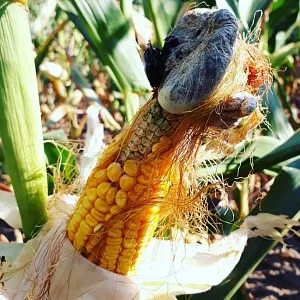 Head smut primarily attacks corn cobs. The fungal disease manifests as rough white swellings on stems, cobs, roots, leaves, and tassels.
Head smut primarily attacks corn cobs. The fungal disease manifests as rough white swellings on stems, cobs, roots, leaves, and tassels.
As the disease progresses, these swellings turn into olive-colored dust. Head smut affects both young and mature plants, leading to deformities and death.
Contributing factors include overcrowded planting, hot climates, and prolonged drought. Yield losses range from 10–25%.
For prevention, treat seeds before planting and spray with Prosaro. For active infections, apply Propulse.
Fusarium
Fusarium occurs in regions with high humidity and hot climates. The disease typically strikes during early maturation.
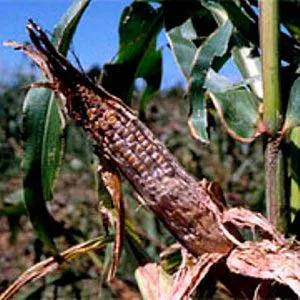 Infected cobs develop multiple lesions that spread over time. Kernels become crumbly, easily dented, and turn white or pink.
Infected cobs develop multiple lesions that spread over time. Kernels become crumbly, easily dented, and turn white or pink.
Preventive measures include:
- planting Fusarium-resistant hybrids;
- following proper planting techniques;
- monitoring irrigation and fertilization.
If infection occurs, remove affected cobs immediately and spray remaining plants with Proteus.
Store corn in a dry, well-ventilated cellar with humidity below 80%.
Important! Fusarium can also develop post-harvest due to excess moisture and improper storage.
Stalk Rot
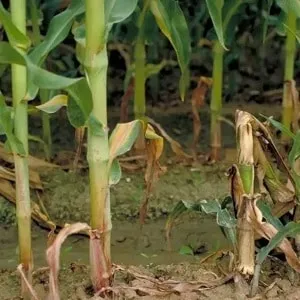 Stalk rot results from infected plant debris, overcrowding, or weeds. Stems and leaves become brittle, develop dark mold, and eventually rot. The disease thrives in hot, rainy weather.
Stalk rot results from infected plant debris, overcrowding, or weeds. Stems and leaves become brittle, develop dark mold, and eventually rot. The disease thrives in hot, rainy weather.
For prevention, treat seeds with a manganese or succinic acid solution before sowing. For treatment, use Estet.
Southern Leaf Blight
This disease affects cobs, stems, and leaves. Large reddish-gray spots appear, eventually turning into necrotic areas. Kernels blacken, and cobs develop dark mold. Infection sources include contaminated seeds, plant debris, or pests.
Prevention involves proper planting density and resistant hybrids. Treat with Tabu Super.
Diplodia
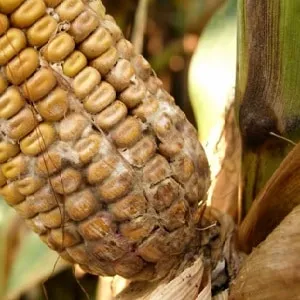 Diplodia primarily targets young plants. Stems develop dark lesions, becoming brittle. Leaves show brown spots, and cobs exhibit white fungal growth.
Diplodia primarily targets young plants. Stems develop dark lesions, becoming brittle. Leaves show brown spots, and cobs exhibit white fungal growth.
Control methods include proper sowing/harvest timing, debris removal, and balanced fertilization. For treatment, use Triton or Quasar.
Bacterial Wilt
Leaves thin out, turn yellowish, and dry at the tips. Infected plants fail to fruit, and mature cobs produce damaged kernels. Remove and burn affected plants immediately.
Prevention includes regular weeding and weed control.
Corn Pests
Beyond diseases, insects also threaten corn crops. Below are the most common pests.
European Corn Borer
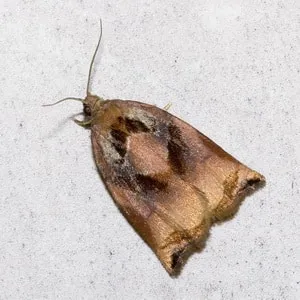 Larvae burrow into stems, creating tunnels and feeding on cobs and tassels. Brown frass spills from entry holes. A single plant may host 1–3 larvae, reducing yields by up to 80%. Stalks dry out and snap. Adults resemble brown aphids. Treat with Decis.
Larvae burrow into stems, creating tunnels and feeding on cobs and tassels. Brown frass spills from entry holes. A single plant may host 1–3 larvae, reducing yields by up to 80%. Stalks dry out and snap. Adults resemble brown aphids. Treat with Decis.
Root Aphid
Root aphids colonize roots and stem bases, draining nutrients and causing yellowing/stunting. They also increase fungal disease risks. For prevention and treatment, spray with Bordeaux mixture.
Important! Farmers recommend cutting stalks close to the ground during harvest. Remove all plant debris before winter and plow fields deeply.
Frit Fly
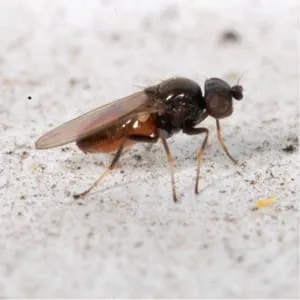 This small black pest attacks corn at any growth stage. Flies lay eggs in plants; larvae feed internally on sap. Damaged stems wilt, but the rest of the plant often survives.
This small black pest attacks corn at any growth stage. Flies lay eggs in plants; larvae feed internally on sap. Damaged stems wilt, but the rest of the plant often survives.
Pre-sowing measures include seed treatment and germination testing. For active infestations, apply Estet.
Wireworm
These soil-dwelling worms survive cold temperatures and destroy roots, starving plants of nutrients. Prevention includes deep tilling, ammonia-based fertilizers, and manual egg removal. Treat with Basudin or Nemabakt.
Disease and Pest Prevention
To minimize risks, implement these preventive steps:
- Till soil before planting to deter pests.
- Late autumn plowing reduces wireworm and aphid risks.
- Intercropping with lettuce attracts pests away from corn.
- Water with clean, warm water to prevent diseases.
- For acidic soils, apply a lime-wood ash mixture before planting.
Conclusion
Corn diseases can destroy 10–40% of yields. To prevent losses, use safe, effective insecticides and agronomic practices. Pre-sowing seed treatment, optimal planting density, and field hygiene (weeding, debris removal) are essential for healthy crops.







